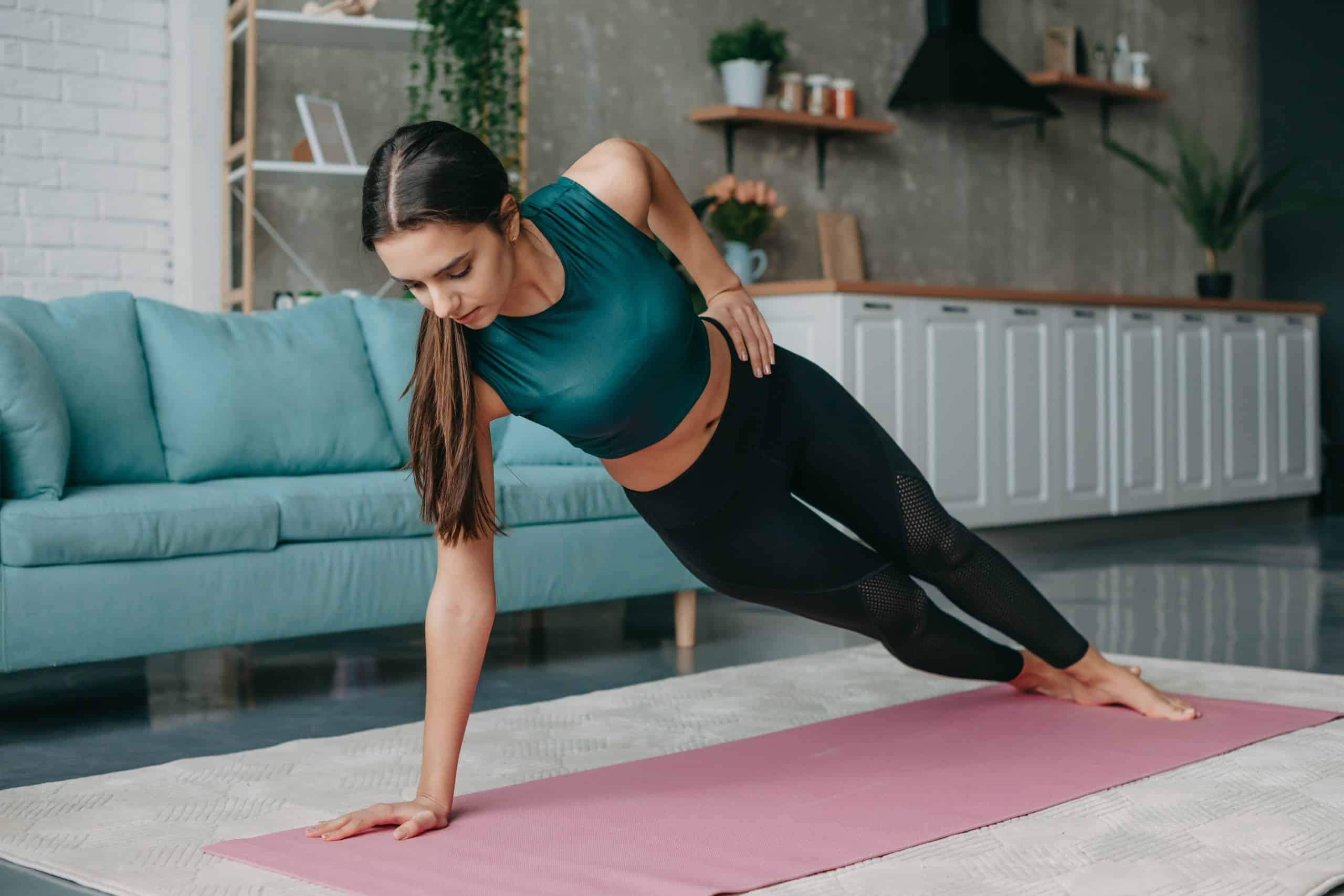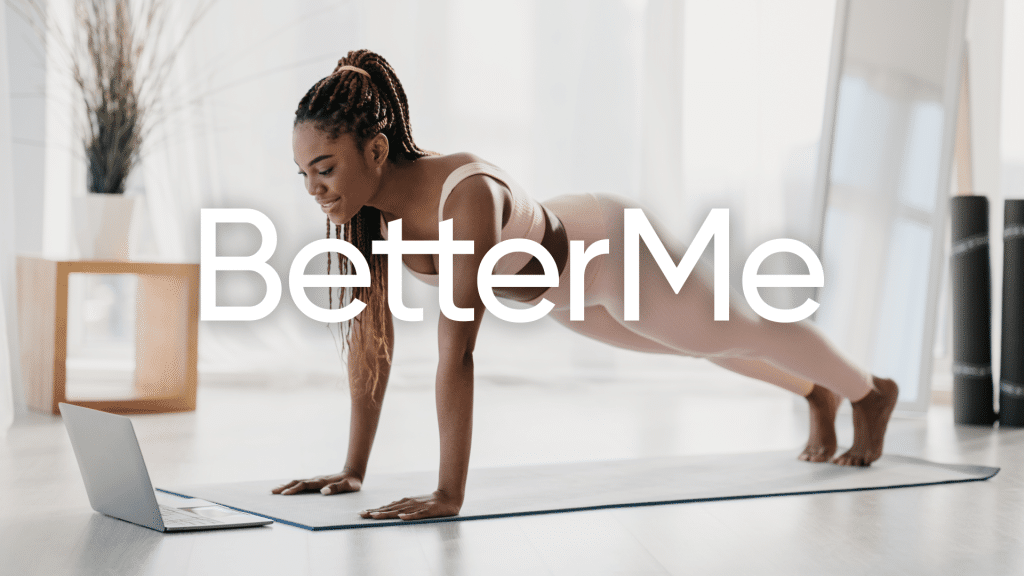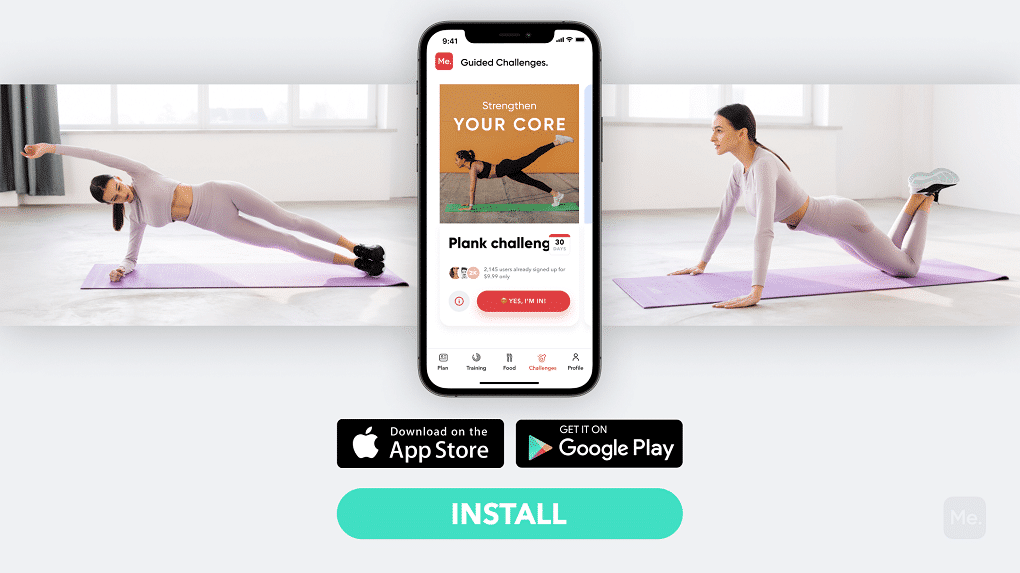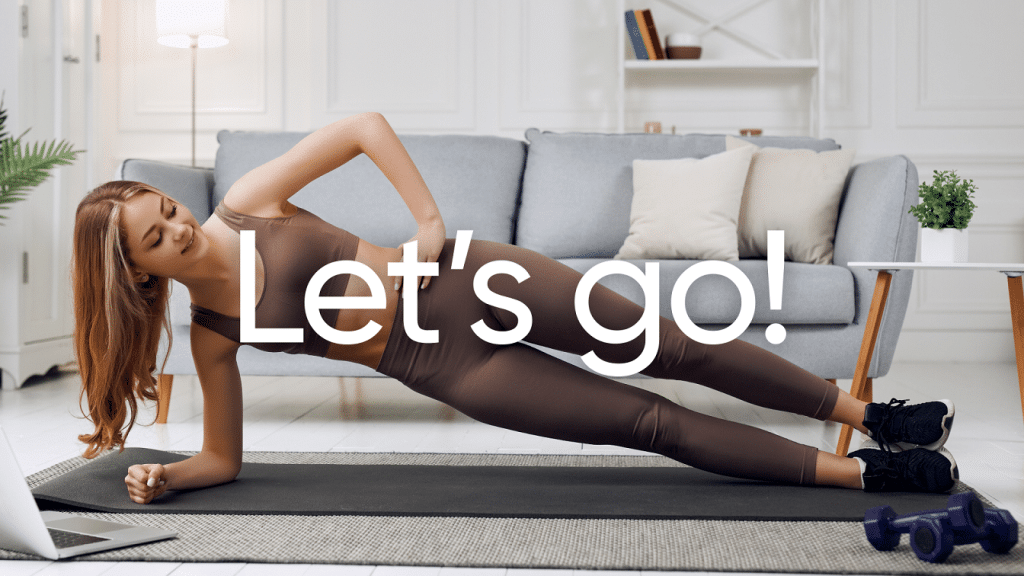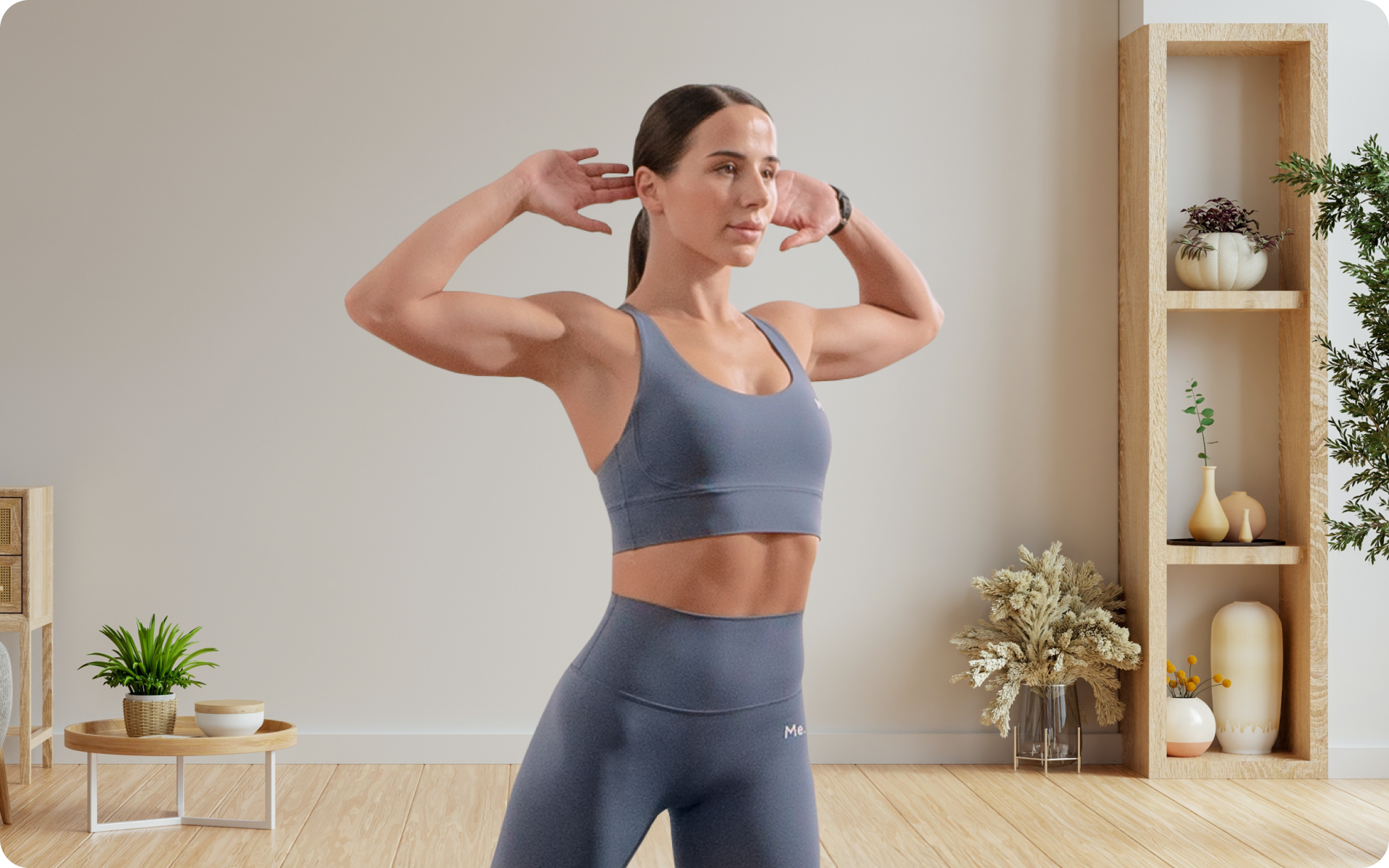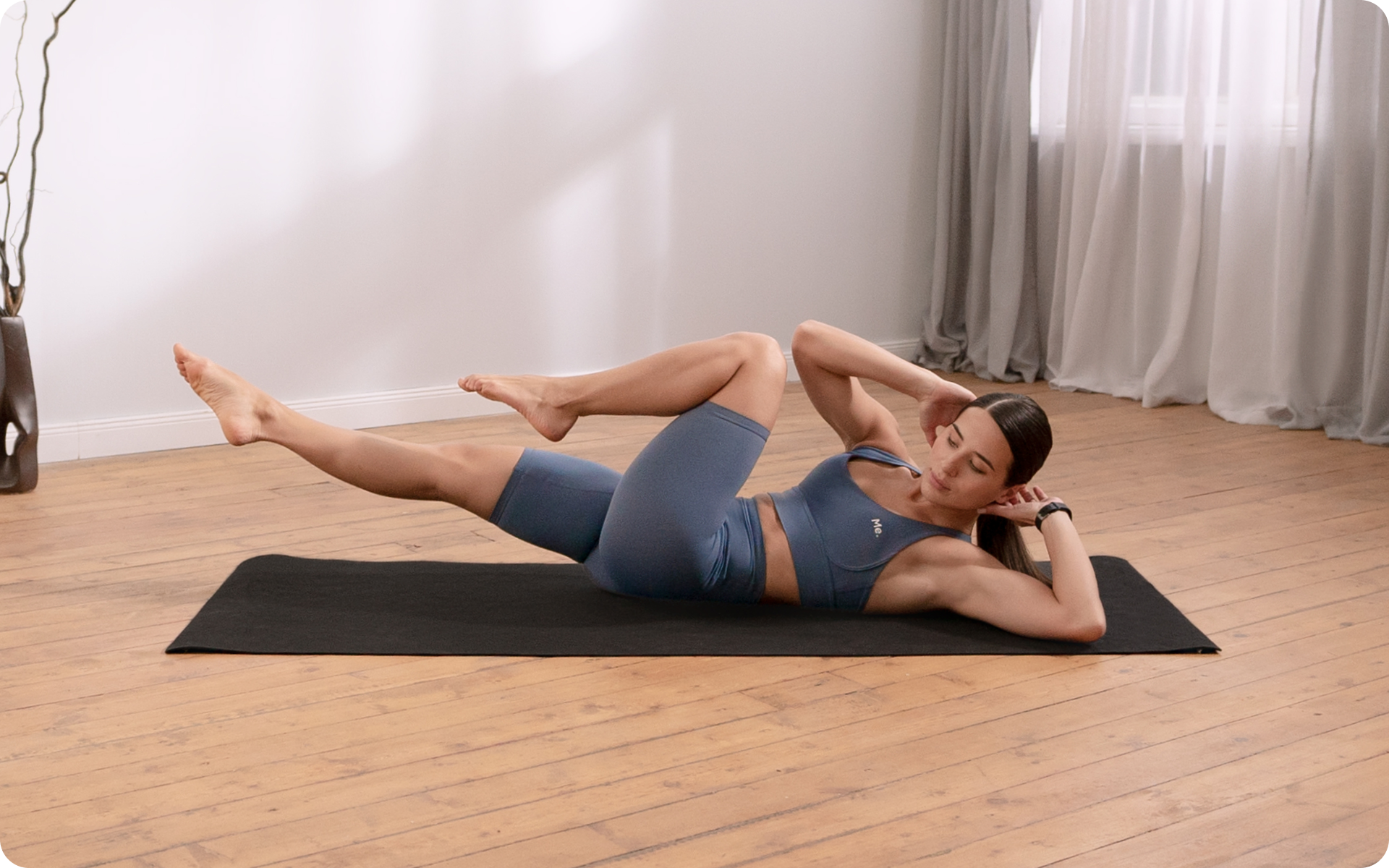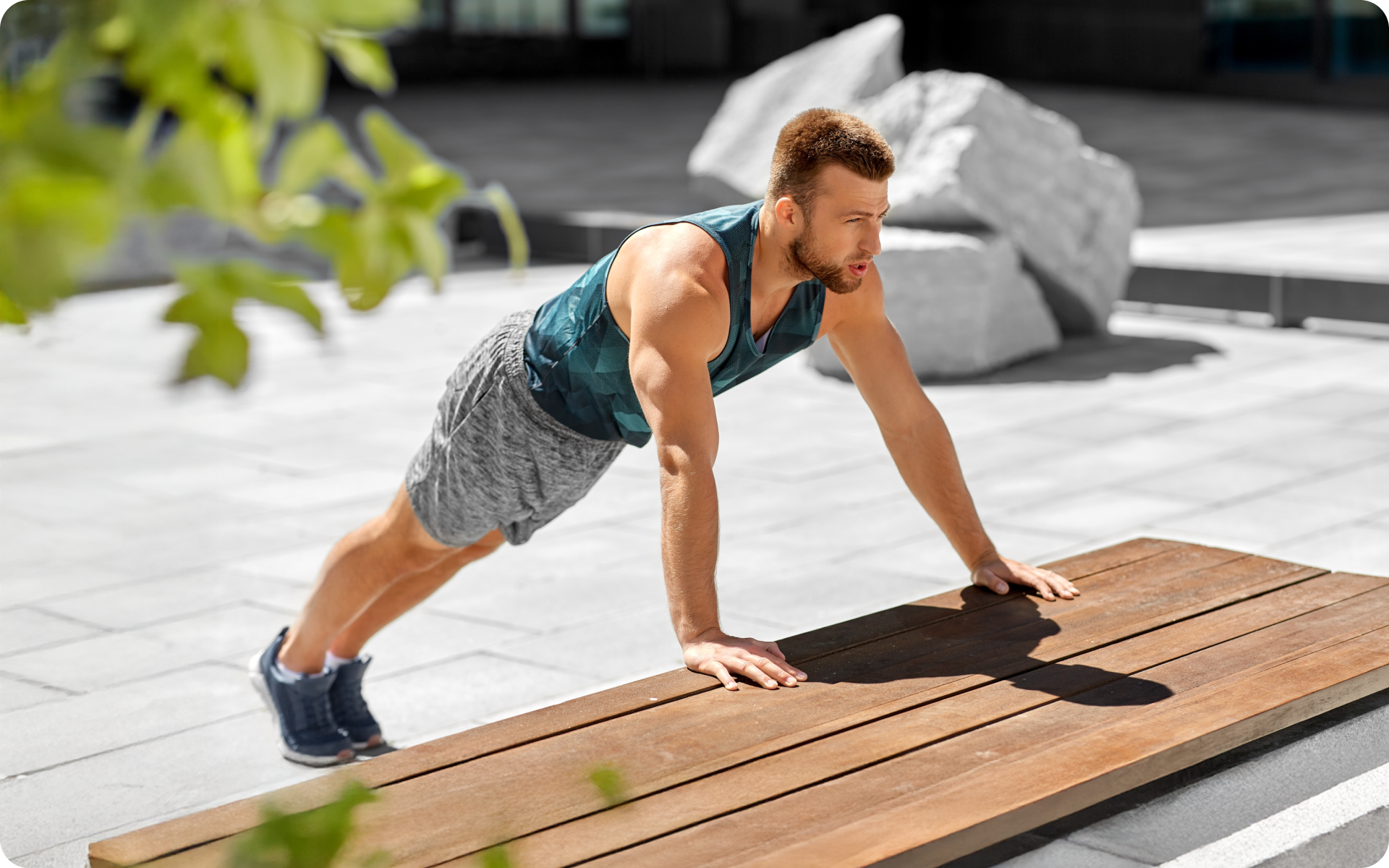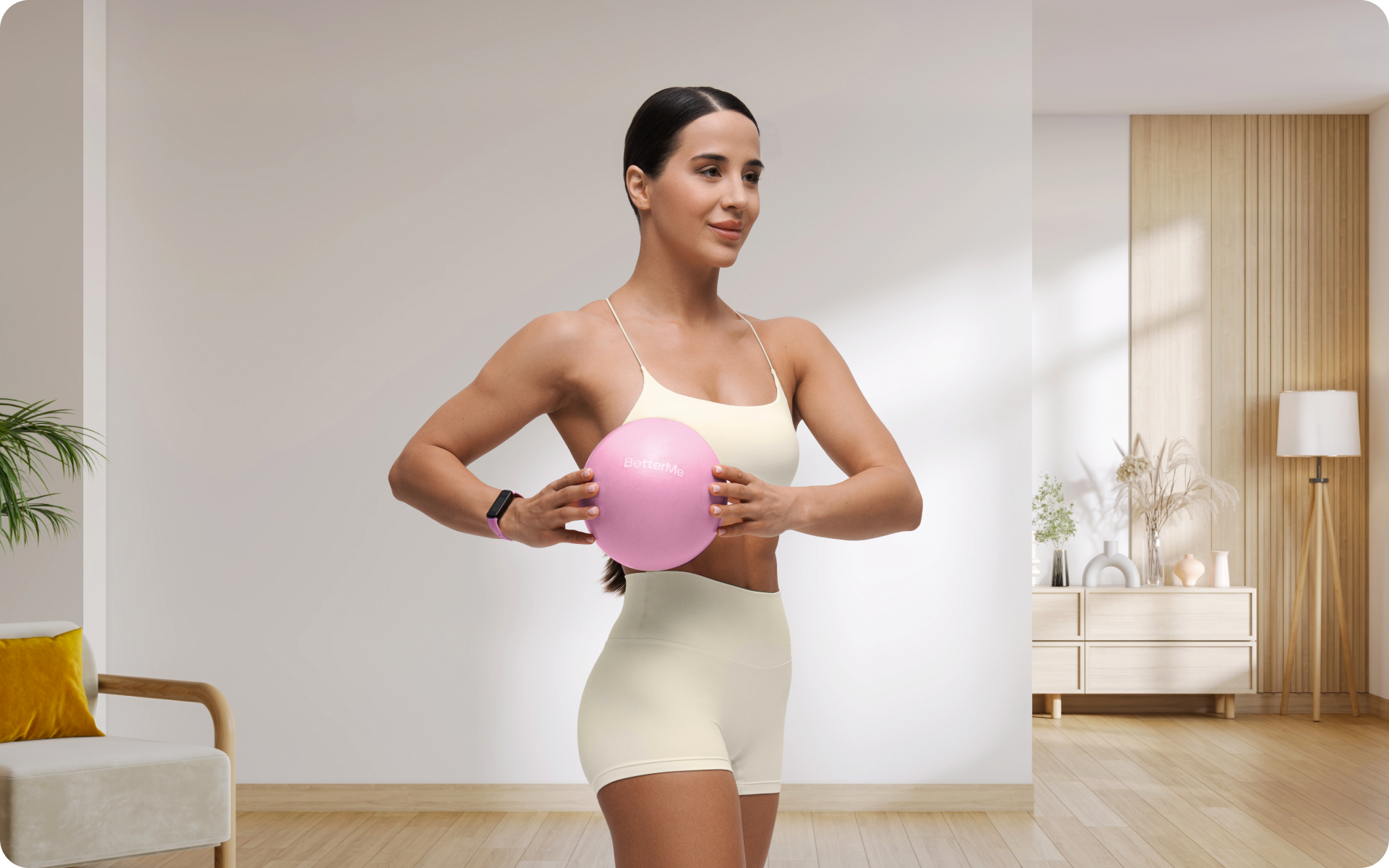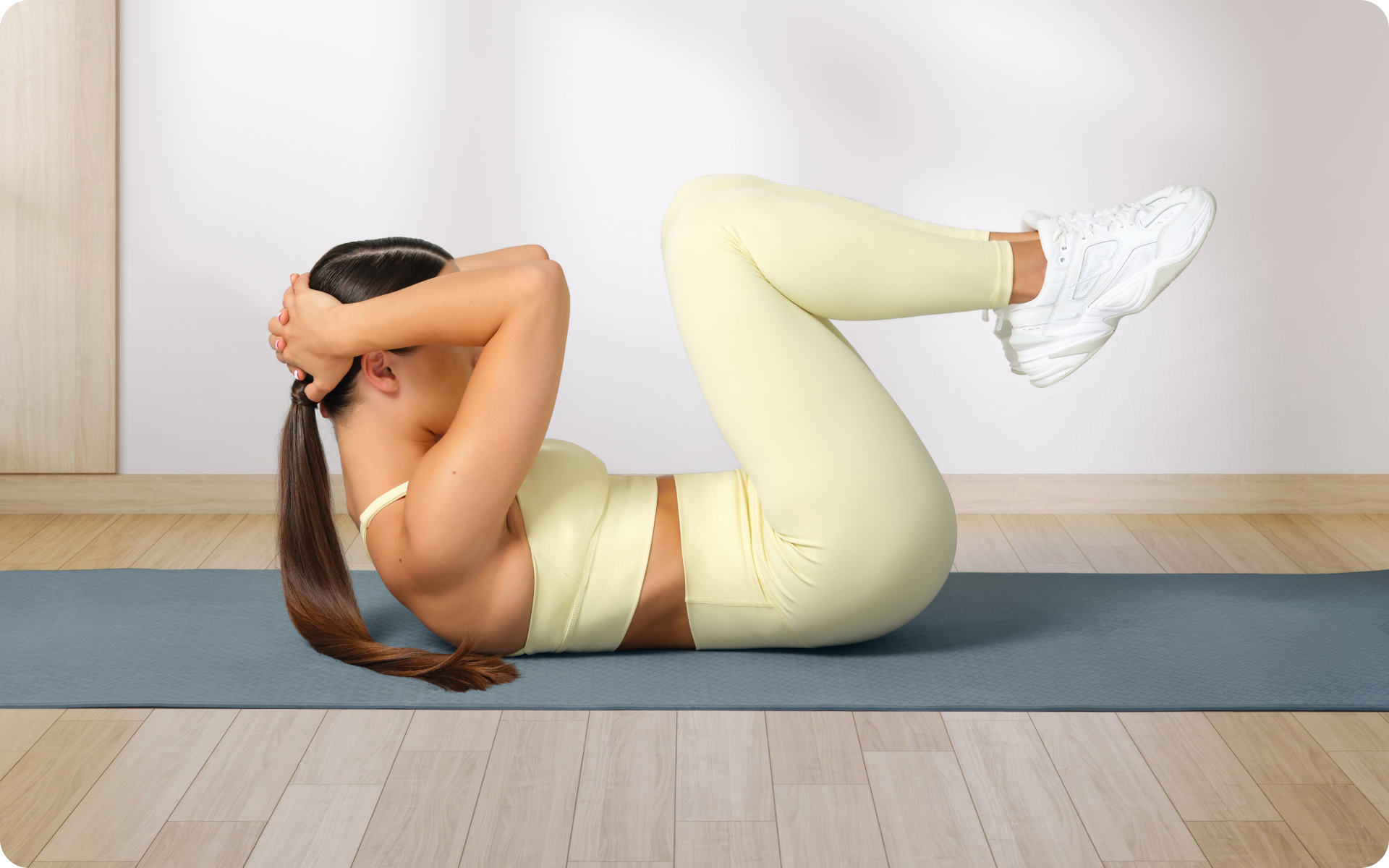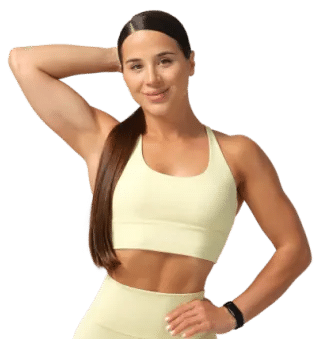A strong core is the base of every gym goer’s fitness routine. That’s because with a strong core you can do more activities and exercises with better form, thereby maximizing the effects of your efforts. Even the average joe who hasn’t set foot in a gym can benefit from a strong core due to its role in stabilizing the spine and toning the midsection (aka getting rid of that dreaded ‘pooch’).That’s why it’s a good idea to incorporate core exercises like the plank into your routine. The plank is a simple, effective, yet often challenging exercise for improving core strength and stability. It works the entire abdominal area—as well as other muscles in your back, glutes, and legs— to create a toned, strong core. The great thing about the plank is that it can be adapted to fit any fitness level. Here are thirteen different plank progressions for you to try, from beginner level to more advanced variations:
1. Wall Plank
Never done it before? Start with the wall plank. Think of it as a way to check your form, understand which muscles you should be engaging, and get comfortable with the plank position.
To do a wall plank:
- Stand facing a wall and place your palms against it at shoulder level, about two to three feet away.
- Gently push your lower body away from the wall, engaging your core and glutes to keep you in position. Make sure to keep your head, neck, and spine in alignment—no slouching!
- Hold the position for as long as you can. When you’re able to hold it for one minute with correct form, move on to the next progression.
2. Half-Kneeling Elbow Plank
This variation takes the pressure off your lower back, making it easier to focus on engaging your core muscles. It’s beginner friendly, so if you’re just starting out with planks, give this one a go:
- Start in a half-kneeling position with your hands on the ground and your elbows directly below your shoulders.
- Engage your core, glutes, and quads to keep your upper body in one long line.
- Hold the position for 30 seconds to a minute.
Read More: How Long Is A Good Plank? Here Is What Experts Recommend
3. Basic Plank
Also referred to as the traditional plank, this is the standard plank that most people are familiar with. It’s a great starting point for beginners and people with moderate core strength, even though it looks deceptively simple.
- Start by getting into a push-up position with your arms straight, and hands directly below your shoulders. Your knees should be off the ground.
- Engage your core and glutes to keep your body in one long line from head to toe.
- Engage your abdominal muscles to draw your belly button in towards your spine.
- Hold the position for 30 seconds, then rest and repeat.
4. One Leg Plank
This variation adds an extra challenge for those looking to take their core strength up a notch. It forces you to engage your core even more than in the basic plank, and it also works your glutes.
- Start in the basic plank position (elbows shoulder-width apart, palms flat on the floor, and body in one long line).
- Lift your right foot off the ground and slowly extend it straight back. Make sure to maintain a flat, neutral spine throughout the exercise.
- Hold for 30 seconds then repeat on the other side with no rest in between. Rest after completing both sides and repeat.
5. One Arm, One Leg Plank
This variation is not for the faint of heart! It takes a lot of core strength and stability to remain in this position. It also adds an element of balance to the mix, making it a great full-body workout.
- Start in the basic plank position with your body in one long line.
- Raise your right arm and left leg off the ground simultaneously, making sure to keep your hips level and your core engaged.
- Hold the position for 30 seconds then switch sides, holding each side for 30 seconds with no rest in between.
- Rest after completing both sides and repeat.
6. Knee-To-Elbow Plank
This plank variation adds a dynamic element to the traditional plank, increasing the challenge and engaging your core even further. It has the added benefit of helping to increase your range of motion as well.
- Start in the basic plank position and slowly bring your right knee towards your right elbow, while keeping your hips level.
- Return to the plank position and repeat on alternating sides for 30 seconds.
- Rest after completing both sides and repeat.
7. Superman Plank
Aptly named, this plank variation engages your entire back, giving you that “superhuman” feeling. It’s a great exercise for strengthening and stabilizing your lower back muscles and strengthening your core.
- Start in a push-up position with your hands directly below your shoulders.
- Engage your core and glutes to keep your body in one long line.
- Walk your hands out to the front as far as you can go, keeping your legs and hips in the same position.
- Press your palms into the ground, and hold the position for 30 seconds.
- Rest then repeat.
BetterMe app is a foolproof way to go from zero to a weight loss hero in a safe and sustainable way! What are you waiting for? Start transforming your body now!
8. One Leg Superman Plank
This is an advanced variation of the Superman plank. It adds an extra challenge to the exercise, requiring more balance and stability than the traditional Superman plank.
- Start in the Superman Plank position, but with one leg slightly raised off the ground.
- Engage your core and glutes to remain in the plank position.
- Press your palms into the ground and hold the position for 30 seconds.
- Switch legs and repeat.
- Rest after completing both sides and repeat.
9. One Arm One Leg Plank With Reach
This plank variation requires a lot of core strength and stability, but the added reach adds an extra challenge. It also works your shoulders and arms, making it a great full-body exercise.
- Start in the superman plank position with your right arm extended out in front and your left leg raised off the ground.
- Engage your core to keep your body in one long line.
- Reach your right arm as far as you can without losing your balance or destabilizing your core.
- Hold for 30 seconds then switch sides and repeat.
- Rest after completing both sides and repeat.
10. Side Plank
Your obliques will thank you for this one! Side planks are great for engaging your entire core, and also give you a nice stretch in the process. They specifically target your obliques, which are important for maintaining good posture and balance.
- Start by lying on your right side with your elbow directly beneath your shoulder. Your legs should be stacked on top of each other.
- Engage your core to raise your hips off the ground, and keep your body in one long line. Avoid letting your hips drop.
- Hold for 30 seconds or as long as you can.
- If you find this variation too hard, attempt it in a kneeling position first to build up your strength (instead of having your legs straight and stacked).
- Switch sides and repeat.
- Rest after completing both sides and repeat.
12. Decline Plank
You’ll need a step or bench for this one. This variation takes the classic plank to a whole new level by increasing the angle and making it even more challenging.
- Start in a basic plank position, with your feet on a step or bench and your hands directly below your shoulders. Ensure that your body forms one long line.
- Engage your core to hold the position.
- Hold for 30 seconds or as long as you can.
- Rest then repeat.
13. Quadruped Plank
This variation of the plank exercise focuses on your shoulder and core stability, working both at the same time. It is great for increasing strength and stability in your shoulder area, which is important for good posture and injury prevention.
- Start in a tabletop position with both hands and both knees on the ground. Your spine should be in a neutral position.
- Engage your core and keep your body in one long line as you walk your hands forward and extend your legs behind you.
- Hold the position for 30 seconds or as long as you can.
- Return back to the tabletop position and repeat.
- Rest after completing the exercise and repeat.
Read More: Plank Challenge: 30-Day Of Trainings For Better Physique
Will Doing A Plank Every Day Make A Difference?
Yes! Doing a plank every day can make a big difference in your core and overall strength (2). As you continually challenge your body, you will see and feel the results. However, you must be cautious not to overdo it.
That’s because repeatedly stressing the same muscles without adequate recovery can cause injury. Your back, shoulders and neck may start to feel strained if you don’t give your body a break. To prevent injury, be sure to rest for at least two days a week.
How Long Should I Plank To Get Results?
The length of time you should plank depends on your current fitness level and goals. If you are just starting out, start with short planks that are at least 30 seconds long. Your first priority should be perfecting your form and ensuring you’re engaging the right muscles.
As you get stronger, gradually increase the length of your plank to a minute or more. Keep in mind that it’s better to hold a shorter plank with correct form than it is to hold a longer one without proper technique.
Ultimately, the goal should be to progress and challenge yourself. But be sure to listen to your body and take breaks when needed.
Do Planks Get Easier Over Time?
Yes, planks can definitely get easier over time. As your core strength increases and you strengthen the muscles involved in a plank, you’ll be able to hold the position for longer periods of time.
As you become more proficient at planks, it’s important to add variations and increase the duration of each plank to keep challenging yourself. You can improve your ability to hold a plank longer and do more challenging variations if you incorporate other forms of exercise into your routine.
Abdominal and core exercises such as crunches, bridge poses, mountain climbers and leg lifts are great complementary exercises to add to your plank routine. Incorporating strength training and HIIT (high-intensity interval training) into your workouts can also help you build more endurance in planks (1).
How Do You Increase The Intensity Of A Plank?
A solid plank progression plan is the best way to increase the intensity of your plank exercises. Follow these tips to increase the intensity of your planks:
- Add time: Gradually increase the amount of time you can hold a plank for.
- Add variations: Try different plank variations to add more challenge.
- Increase difficulty:Increase the difficulty of your planks by adding dynamic or balance elements.
- Add weights:Incorporate weights into your planks to challenge your muscles even more.
The Bottom Line
Planks are an effective exercise for strengthening your core and improving shoulder stability. When done correctly, they can help you build strength, improve balance, and prevent injury. Start out by perfecting your form and gradually add time, intensity, and variations to challenge yourself as you get stronger.
DISCLAIMER:
This article is intended for general informational purposes only and does not serve to address individual circumstances. It is not a substitute for professional advice or help and should not be relied on for making any kind of decision-making. Any action taken as a direct or indirect result of the information in this article is entirely at your own risk and is your sole responsibility.
BetterMe, its content staff, and its medical advisors accept no responsibility for inaccuracies, errors, misstatements, inconsistencies, or omissions and specifically disclaim any liability, loss or risk, personal, professional or otherwise, which may be incurred as a consequence, directly or indirectly, of the use and/or application of any content.
You should always seek the advice of your physician or other qualified health provider with any questions you may have regarding a medical condition or your specific situation. Never disregard professional medical advice or delay seeking it because of BetterMe content. If you suspect or think you may have a medical emergency, call your doctor.
SOURCES:
- High-Intensity Functional Training (HIFT): Definition and Research Implications for Improved Fitness (2018, nih.gov)
- Why You Should Start Doing Planks (2021, nih.gov)
